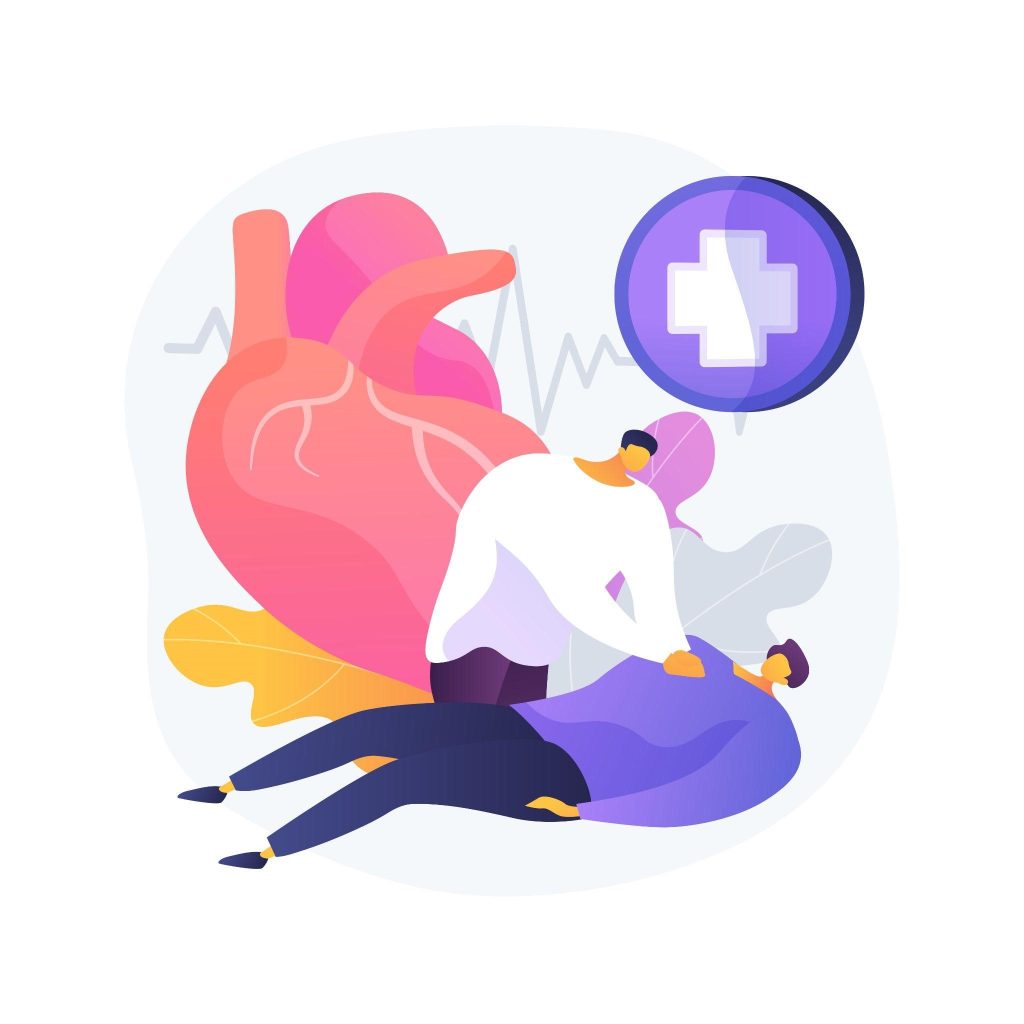Online CPR Certification Blog
How Long Does it Take for CPR to Work?
Date: March 11th, 2024
We’ve all been there: watching a gripping TV show where a character collapses and another jumps into action, pumping their chest and trying to bring them back to life.
While dramatized, these scenes reflect the real-world magic of CPR (Cardiopulmonary Resuscitation). The lingering question, though, is – how long does it truly take for CPR to work?
Let’s journey together into the heart of this life saving technique

Alt Tag: illustration of a rescuer performing CPR on a victim
Why We Perform CPR: A Beacon of Hope
At its core, CPR is not about “waking someone up” instantaneously. It’s about maintaining the flow of oxygenated blood to the brain and vital organs, acting as a beacon of hope until further medical intervention can be administered.
Factors that Influence CPR Outcome
Immediate action: Time is of the essence. Starting CPR immediately after cardiac arrest can dramatically increase the chances of survival.
Depth and Rate of Compressions: It’s crucial to get this right. Compressions should be at least 2 inches deep and given at a rhythm of 100-120 per minute. Imagine the beat of a fast-paced song guiding your hands.
Breaths: If you’re giving rescue breaths, they need to be effective. It’s about ensuring air gets to the lungs.
Underlying Cause: Not all cardiac arrests are the same. Some, like those caused by drowning or an electric shock, might have better odds with CPR compared to others.
The Duration Dilemma: How Long to Perform CPR?
The answer isn’t straightforward. One would continue CPR until there are signs of life, an AED becomes available, a medical professional intervenes, or it becomes too exhausting or unsafe to proceed. While movies may depict instant results, reality reminds us that patience and persistence are crucial.
Reality vs. Expectations
Hollywood has a knack for drama, but CPR in the real world isn’t always like the movies. Success isn’t instant, and not everyone “wakes up” immediately. On the flip side, studies suggest that immediate CPR can double or even triple the chances of survival after cardiac arrest.
A Personal Brush with CPR’s Magic
Allow me to share a personal tale. A dear friend, while at a family gathering, suddenly collapsed. Panic ensued. But one cousin, recently trained in CPR, jumped into action. For what felt like an eternity (but was roughly 7 minutes), he performed CPR, maintaining a rhythm that seemed to beat with all our hearts.
When the paramedics arrived, they took over, and later commended him for his actions. The doctors were clear: those crucial minutes of Cardiopulmonary resuscitation made all the difference. My friend made a complete recovery, and we were all reminded of the power of knowledge and timely action.
CPR in Numbers: The Table of Truth
In the realm of emergency medicine, numbers often tell a story more vividly than words. As we dive deep into the mechanics and methods of CPR, it’s crucial to understand its real-world impact. This table sheds light on how specific factors can dramatically influence the outcomes of a life hanging in the balance.
| Factor | Statistical Impact |
| Immediate CPR action | Increases survival rates by 2-3 times |
| Proper Compression depth | Can double or triple survival rates |
| Use of an AED with CPR | Increases survival rates by up to 75% |
By understanding these statistics, it becomes abundantly clear why CPR training is so crucial. It’s not just about going through the motions, but about maximizing the potential for survival at every step. With every compression and every timely intervention, you’re boosting someone’s chances to live another day.
Connecting the Dots: From the Heart to the Hands
It’s a beautiful tapestry, really. The understanding of CPR’s purpose connects with the factors that influence its success, weaving seamlessly into the actual duration and methodology. Each element, like a stitch, strengthens the overall fabric of lifesaving potential. Your hands, powered by knowledge, become the very lifeline someone might need.
FAQ Section
How often should one renew their CPR certification?
Ideally, every two years to stay updated with the latest techniques and guidelines.
Is there a difference between CPR for adults and children?
Yes, the techniques, depth of compressions, and even the rhythm can vary between adults, children, and infants.
Is mouth-to-mouth always necessary when performing CPR?
No, while traditional CPR combines chest compressions with rescue breaths, hands-only CPR, which involves only chest compressions, is also effective and recommended especially for untrained bystanders.
What’s the significance of AED, and how does it fit into the CPR process?
An AED (Automated External Defibrillator) is a device used to shock the heart back into a normal rhythm. During CPR, if an AED is available, it should be used as soon as possible because it can significantly increase the chances of survival.
Can I harm someone by performing CPR incorrectly?
While there’s a risk of causing injuries, such as broken ribs, the benefit of possibly saving a life greatly outweighs the risks. It’s essential to remember that a person in cardiac arrest is already in a life-threatening situation, and CPR can only help. Proper training can minimize the potential for injuries.
Knowledge empowers action. Equip yourself with CPR training, and become someone’s beacon of hope in their darkest hour. Your hands have the power to ignite the most profound human connection – the gift of life.
In Conclusion: Every Second Counts
CPR is more than just a medical technique. It’s a testament to human resilience and the desire to help. It underscores that in moments of crisis, every second, every compression, and every breath counts. Remember, while we may ponder over how long CPR takes to work, the real magic lies in its timely application and the hope it embodies.
